Comparative Study of the Aerodynamic Performance of the New MEXICO Rotor under Yaw Conditions
Abstract
:1. Introduction
2. Methodology
2.1. Wind Turbine Geometrical and Operational Descriptions
2.2. Grid Generation
- Rotational region: The rotational zone has a shape of a cylinder. The rotor rotates around the +x axis with the origin located at point (0, 0, 0). The radius of the rotating region is 1D, and the region extends from −D to 3D in the x direction, where D is the rotor diameter. The boundary mesh topology around the blade surface is O-type. The height of the first boundary layer cells is kept at 5 × 10−6 m to ensure y+ ≈ 1.
- Stationary region: The outer stationary zone has a cuboid shape in order to ensure the inlet and outlet boundaries easy to specify. The computational domain ranges from [−5D, −5D, −5D] to [10D, 5D, 5D] in the x, y, z directions, respectively. The snapshots of the computational mesh are shown in Figure 1.
2.3. Numerical Methods
3. Results and Discussion
3.1. Grid Dependency
3.2. Rotor Performance Validation at Different Tip Speed Ratios
3.3. Nacelle Effect
3.4. Advancing and Retreating Phenomenon
3.5. Dynamic Stall
3.6. Near Wake Characteristics Analysis
4. Conclusions
- Good agreements can be found in the total force and thrust prediction in optimal wind speed of 15 m/s with the maximum error below 6%. Improvements have been made in off-design state of 10 m/s and 24 m/s.
- The presence of nacelle causes a 3% increase in rotor torque and a 2% increase in thrust. Interactions between the blade tip/root vortices and nacelle are demonstrated. The axial profile shows less wake deficit of the mainstream velocity component when the nacelle obstruction is not taken into consideration.
- Results of the normal and tangential forces at the 25%, 35% and 60% spanwise stations have been validated against the experimental data, and the three dimensional lift and drag characteristics have been analyzed to demonstrate the influence of dynamic stall on the rotor load predictions at the wind speed of 24 m/s in yawed flow.
- The near wake velocity components show a good agreement with the measurement. The DES model shows its advantage in both blade load predictions and wake characteristics.
Acknowledgments
Author Contributions
Conflicts of Interest
References
- Burton, T.; Sharpe, D.; Jenkins, N.; Bossanyi, E. Wind Energy Handbook; John Wiley & Sons Ltd.: West Sussex, UK, 2011; pp. 96–99. ISBN 978-0-474-48997-9. [Google Scholar]
- Huyer, S.A.; Simms, D.; Robinson, M.C. Unsteady aerodynamics associated with a horizontal axis wind turbine. AIAA J. 1996, 34, 1410–1419. [Google Scholar] [CrossRef]
- Shipley, D.E.; Miller, M.S.; Robinson, M.C. Dynamic stall occurrence on a horizontal axis wind turbine. In Proceedings of the Fourteenth ASME-ETCE Wind Energy Symposium, Houston, TX, USA, 29 January–1 February 1995; Volume 16, pp. 167–173. [Google Scholar]
- Butterfeld, C.P.; Scott, G.; Musial, W. Comparison of wind tunnel airfoil performance data with wind turbine blade data. ASME J. Solar Energy Eng. 1992, 114, 119–124. [Google Scholar] [CrossRef]
- Hand, M.; Simms, D.; Fingersh, L.; Jager, D.; Cotrell, J.; Schreck, S.; Larwood, S. Unsteady Aerodynamics Experiment Phase VI: Wind Tunnel Test Configurations and Available Data Campaigns; Technical Report NREL/TP-500-29955; National Renewable Energy Laboratory: Golden, CO, USA, 2001. [Google Scholar]
- Simms, D.; Schreck, D.; Hand, M.; Fingersh, L.J. NREL Unsteady Aerodynamics Experiment in the NASA-Ames Wind Tunnel: A Comparison of Predictions to Measurements; Technical Report NREL/TP-500-29494; National Renewable Energy Laboratory: Golden, CO, USA, 2001. [Google Scholar]
- Schepers, J.G.; Snel, H. MEXICO, Model Experiments in Controlled Conditions; Technical Report ECN-E-07-042; Energy Research Center of The Netherlands: Petten, The Netherlands, 2007. [Google Scholar]
- Snel, H.; Schepers, J.G.; Montgomerie, B. The MEXICO project (Model Experiment in Controlled Conditions): The database and first results of data processing and interpretation. J. Phys. Conf. Ser. 2007, 75, 012014. [Google Scholar] [CrossRef]
- Schepers, J.G.; Boorsma, K.; Cho, T.; Sørensen, N.N. Final Report of IEA Task 29, Mexnext (Phase 1): Analysis of MEXICO Wind Tunnel Measurements; Technical Report ECN-E-12-004; Energy Research Center of The Netherlands: Petten, The Netherlands, 2012. [Google Scholar]
- Schepers, J.G.; Boorsma, K.; Cho, T.; Sørensen, N.N. Final Report of IEA Wind Task 29: Mexnext (Phase 2); Technical Report ECN-E14-060; Energy Research Center of The Netherlands: Petten, The Netherlands, 2014. [Google Scholar]
- Boorsma, K.; Schepers, J.G. Rotor experiments in controlled conditions continued: New MEXICO. The Science of Making Torque from Wind (TORQUE 2016). J. Phys. Conf. Ser. 2016, 753, 022004. [Google Scholar] [CrossRef]
- Schreck, S.; Robinson, M.; Hand, M.; Simms, D. HAWT dynamic stall response asymmetries under yawed flow conditions. Wind Energy 2000, 3, 215–232. [Google Scholar] [CrossRef]
- Schreck, S.; Robinson, M.; Hand, M.; Simms, D. Blade dynamic stall vortex kinematics for a horizontal axis wind turbine in yawed conditions. J. Sol. Energy Eng. 2001, 123, 272–281. [Google Scholar] [CrossRef]
- Leishman, J.G. Challenges in modeling the unsteady aerodynamics of wind turbines. Wind Energy 2002, 5, 85–132. [Google Scholar] [CrossRef]
- Xu, G.; Sankar, L.N. Effects of transition, turbulence and yaw on the performance of horizontal axis wind turbines. AIAA Pap. 2000. [Google Scholar] [CrossRef]
- Sorensen, N.N.; Michelsen, J.A.; Schreck, S. Application of CFD to wind turbine aerodynamics. In Proceedings of the 4th GRACM Congress on Computational Mechanics, Patras, Greece, 27–29 June 2002. [Google Scholar]
- Madsen, H.A.; Sørensen, N.; Schreck, S. Yaw aerodynamics analyzed with three codes in comparison with experiment. In Proceedings of the ASME 2003 Wind Energy Symposium, Reno, NV, USA, 6–9 January 2003; pp. 94–103. [Google Scholar]
- Tongchitpakdee, C.; Benjanirat, S.; Sankar, L.N. Numerical simulation of the aerodynamics of horizontal axis wind turbines under yawed flow conditions. J. Sol. Energy Eng. 2005, 127, 464–474. [Google Scholar] [CrossRef]
- Bazilevs, Y.; Hsu, M.C.; Takizawa, K.; Tezduyar, T.E. ALE-VMS and ST-VMS methods for computer modeling of wind turbine rotor aerodynamics and fluid–structure interaction. Math. Models Methods Appl. Sci. 2012, 22, 1230002. [Google Scholar] [CrossRef]
- Hsu, M.C.; Akkerman, I.; Bazilevs, Y. Finite element simulation of wind turbine aerodynamics: Validation study using NREL Phase VI experiment. Wind Energy 2014, 17, 461–481. [Google Scholar] [CrossRef]
- Micallef, D.; Kloosterman, M.; Ferreira, C.S.; Van Bussel, G.J.W.; Sant, T. Validating BEM, direct and inverse free wake models with the MEXICO experiment. In Proceedings of the 48th AIAA Aerospace Sciences Meeting Including the New Horizons Forum and Aerospace Exposition, Orlando, FL, USA, 4–7 January 2010. [Google Scholar]
- Abedi, H.; Davidson, L.; Voutsinas, S. Development of Free Vortex Wake Model for Wind Turbine Aerodynamics under Yaw Condition. In Proceedings of the 34th Wind Energy Symposium, San Diego, CA, USA, 4–8 January 2016. [Google Scholar]
- Blondel, F.; Boisard, R.; Milekovic, M.; Ferrer, G.; Lienard, C.; Teixeira, D. Validation and comparison of aerodynamic modelling approaches for wind turbines. The Science of Making Torque from Wind (TORQUE 2016). J. Phys. Conf. Ser. 2016, 753, 022029. [Google Scholar] [CrossRef]
- Réthoré, M.; Zahle, F.; Sørensen, N.; Bechmann, A. CFD Simulations of the MEXICO Wind Tunnel and Wind Turbine. In Proceedings of the European Wind Energy Association (EWEA), Brussels, Belgium, 14–17 March 2011. [Google Scholar]
- Bechmann, A.; Sørensen, N.N.; Zahle, F. CFD simulations of the MEXICO rotor. Wind Energy 2011, 14, 677–689. [Google Scholar] [CrossRef]
- Shen, W.Z.; Zhu, W.J.; Sørensen, J.N. Actuator line/Navier-Stokes computations for the MEXICO rotor: Comparison with detailed measurements. Wind Energy 2012, 15, 811–825. [Google Scholar] [CrossRef]
- Pereira, R.; Schepers, G.; Pavel, M.D. Validation of the Beddoes–Leishman dynamic stall model for horizontal axis wind turbines using MEXICO data. Wind Energy 2013, 16, 207–219. [Google Scholar] [CrossRef]
- Sørensen, N.N.; Bechmann, A.; Réthoré, P.-E.; Zahle, F. Near wake Reynolds-averaged Navier–Stokes predictions of the wake behind the MEXICO rotor in axial and yawed flow conditions. Wind Energy 2014, 17, 75–86. [Google Scholar] [CrossRef] [Green Version]
- Tsalicoglou, C.; Jafari, S.; Chokani, N.; Abhari, R.S. RANS computations of MEXICO rotor in uniform and yawed inflow. J. Eng. Gas Turbines Power 2014, 136, 011202. [Google Scholar] [CrossRef]
- Schulz, C.; Meister, K.; Lutz, T.; Krämer, E. Investigations on the wake development of the MEXICO rotor considering different inflow conditions. In New Results in Numerical and Experimental Fluid Mechanics X; Springer International Publishing: Cham, Switzerland, 2016; pp. 871–882. [Google Scholar]
- Menter, F.R.; Kuntz, M.; Langtry, R. Ten years of industrial experience with the SST turbulence model. Turbulence Heat Mass Transf. 2003, 4, 625–632. [Google Scholar]
- Farrell, P.E.; Maddison, J.R. Conservative interpolation between volume meshes by local Galerkin projection. Comput. Methods Appl. Mech. Eng. 2011, 200, 89. [Google Scholar] [CrossRef]
- Zhang, Y.; Zuijlen, A.; Bussel, G. The MEXICO rotor aerodynamic loads prediction: ZigZag tape effects and laminar-turbulent transition modeling in CFD. J. Wind Eng. Ind. Aerodyn. 2017, 168, 152–163. [Google Scholar] [CrossRef]
- Sørensen, N.N.; Zahle, F.; Boorsma, K.; Schepers, G. CFD computations of the second round of MEXICO rotor measurements. J. Phys. Conf. Ser. 2016, 753, 022054. [Google Scholar] [CrossRef]
- Plaza, B.; Bardera, R.; Visiedo, S. Comparison of BEM and CFD results for MEXICO rotor aerodynamics. J. Wind Eng. Ind. Aerodyn. 2015, 145, 115–122. [Google Scholar] [CrossRef]
- Sant, T.; Kuik, G.; Bussel, G.J.W. Estimating the angle of attack from blade pressure measurements on the NREL Phase VI rotor using a free wake vortex model: Axial conditions. Wind Energy 2006, 9, 549–577. [Google Scholar] [CrossRef]
- Lindenburg, C. Investigation into Rotor Blade Aerodynamics; Technical Report ECN-C-03-025; Energy Research Center of The Netherlands: Petten, The Netherlands, 2003. [Google Scholar]
- Johansen, J.; Sørensen, N.N. Airfoil characteristics from 3D CFD rotor computations. Wind Energy 2004, 7, 283–294. [Google Scholar] [CrossRef]
- Rahimi, H.; Hartvelt, M.; Peinke, J.; Schepers, J.G. Investigation of the current yaw engineering models for simulation of wind turbines in BEM and comparison with CFD and experiment. J. Phys. 2016, 753, 022016. [Google Scholar] [CrossRef]
- Shen, W.Z.; Hansen, M.O.L.; Sørensen, J.N. Determination of the angle of attack on rotor blades. Wind Energy 2009, 12, 91–98. [Google Scholar] [CrossRef]
- Guntur, S.; Sørensen, N.N. An evaluation of several methods of determining the local angle of attack on wind turbine blades. J. Phys. Conf. Ser. 2014, 555, 012045. [Google Scholar] [CrossRef]
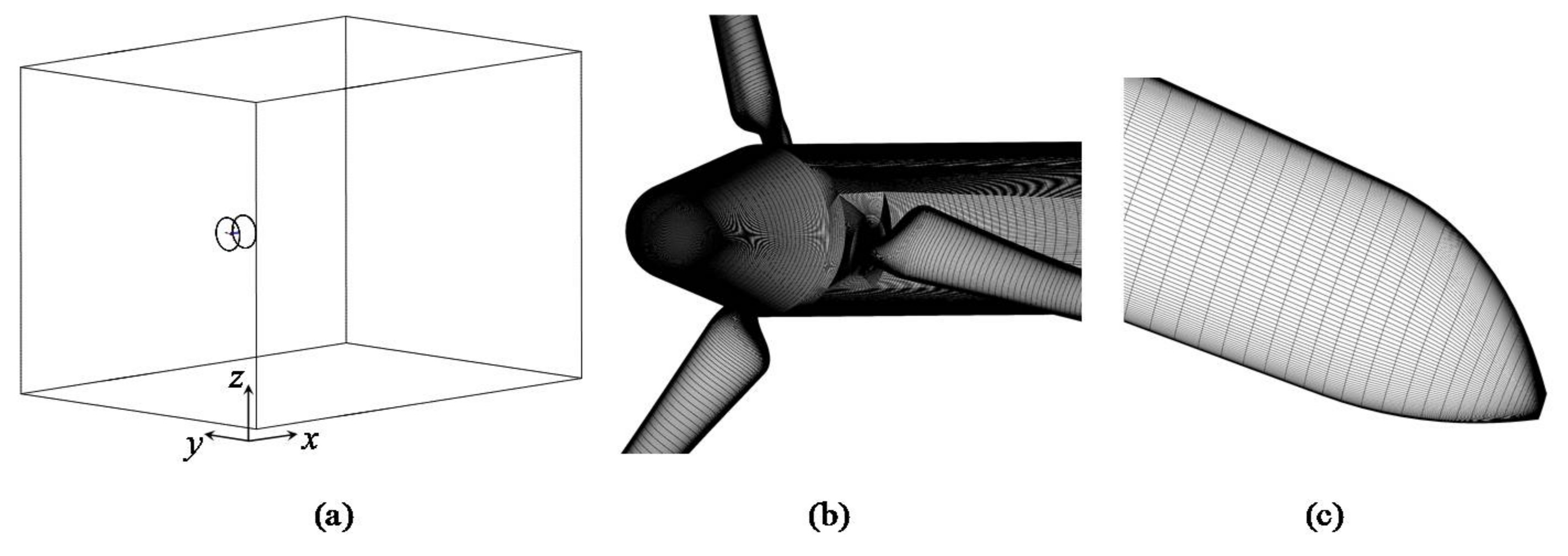

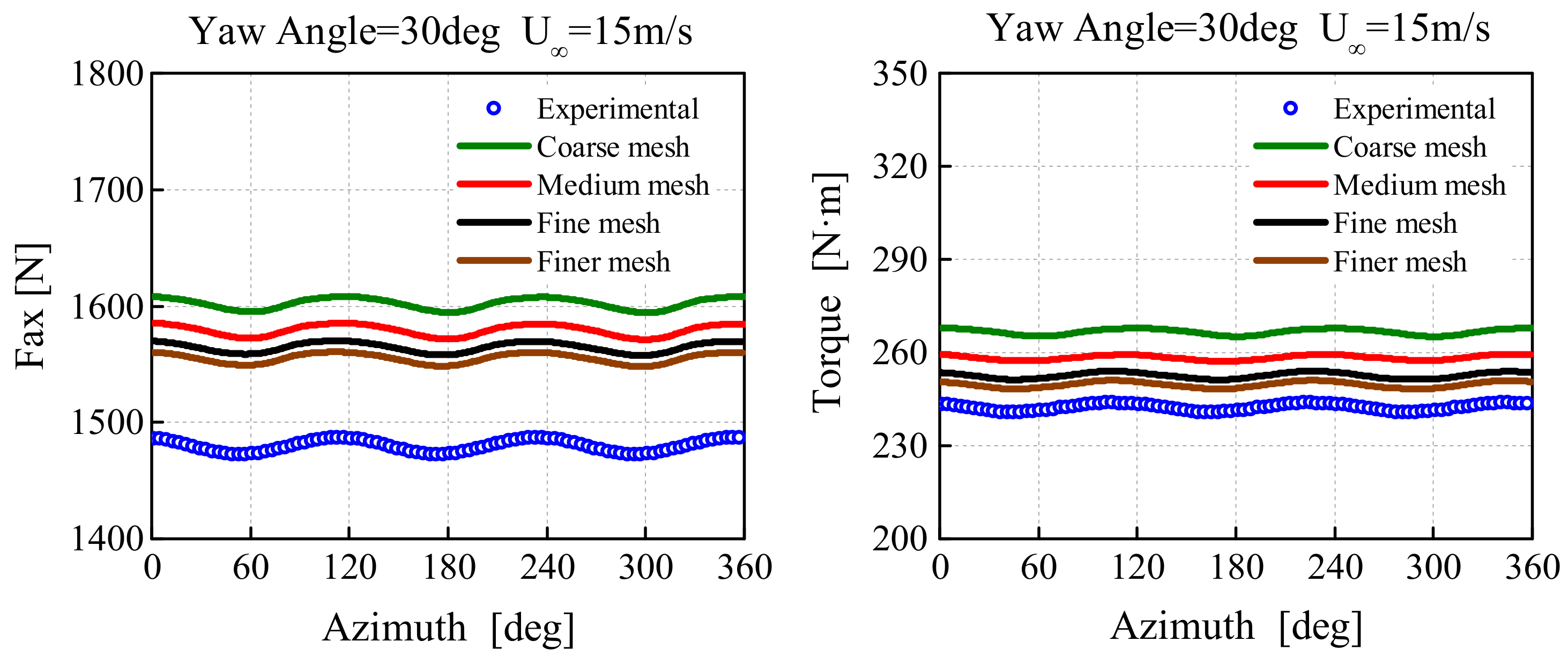
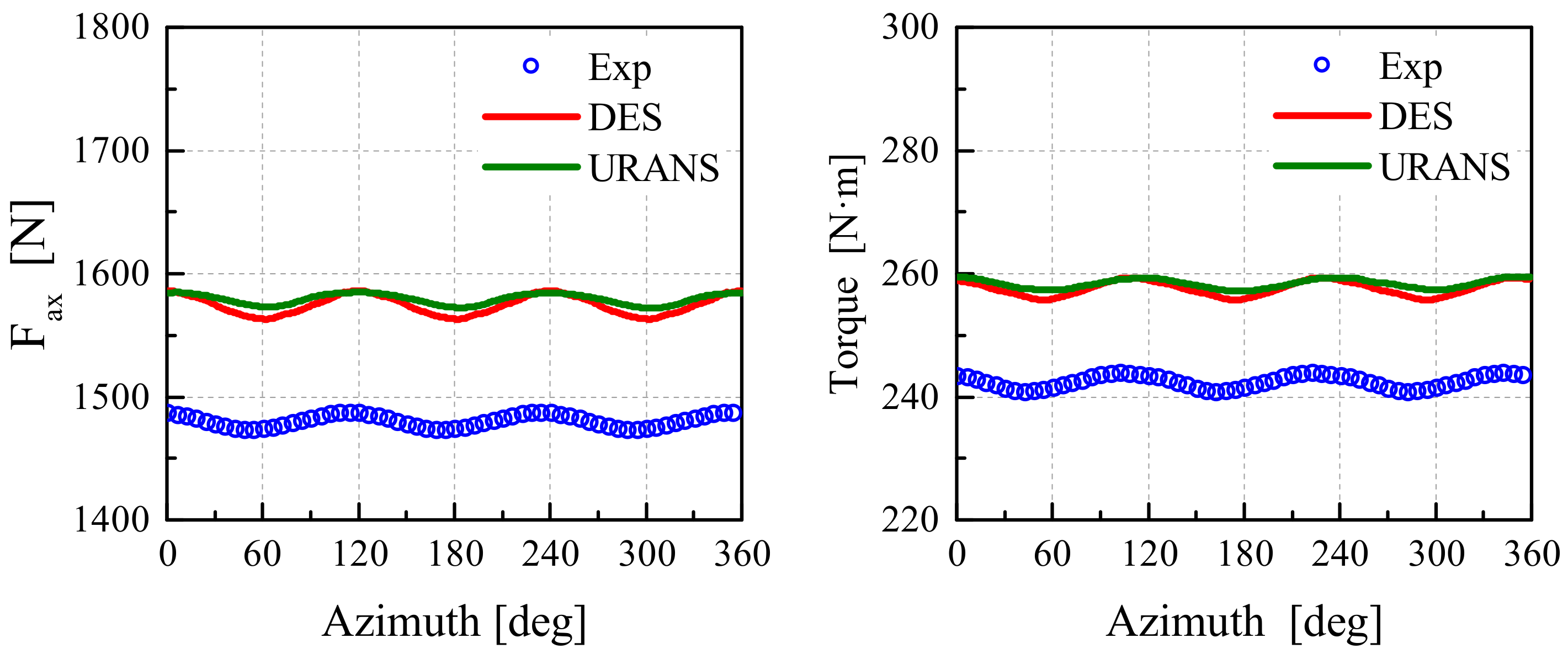
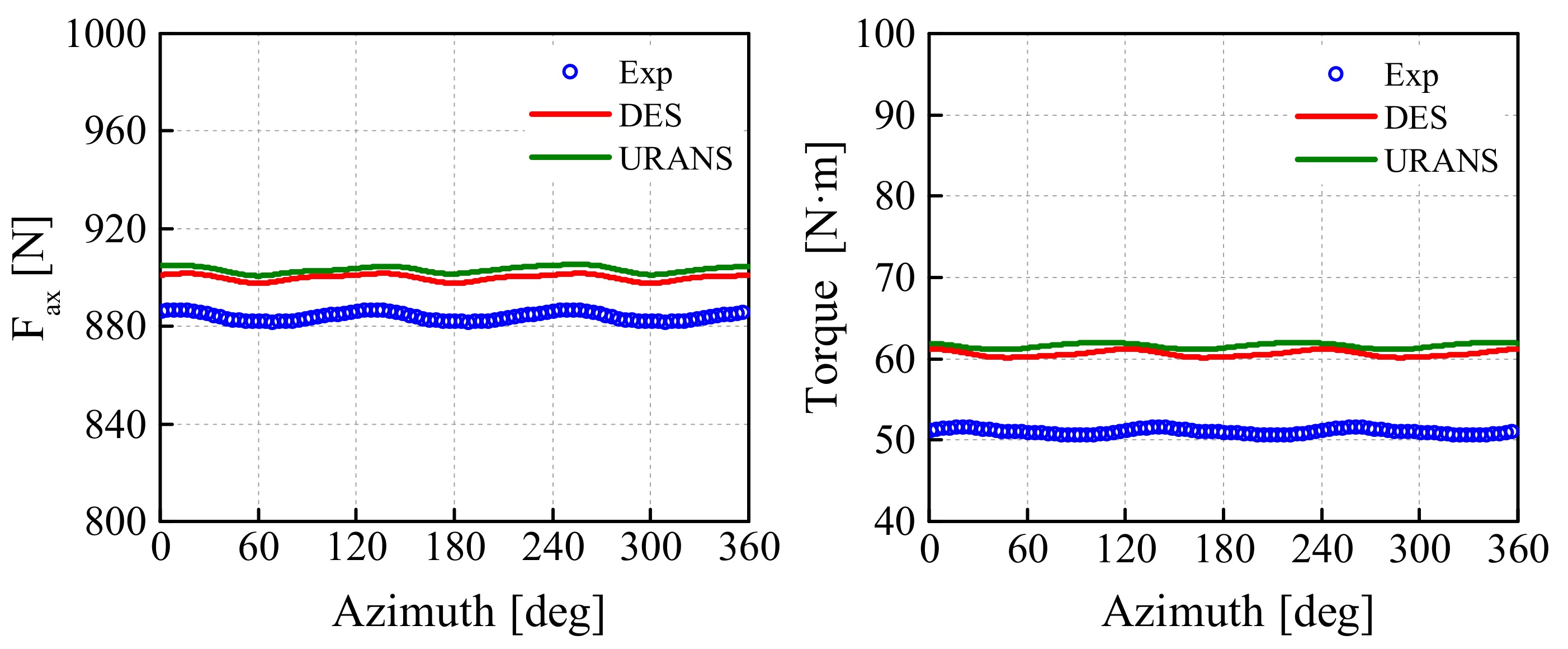
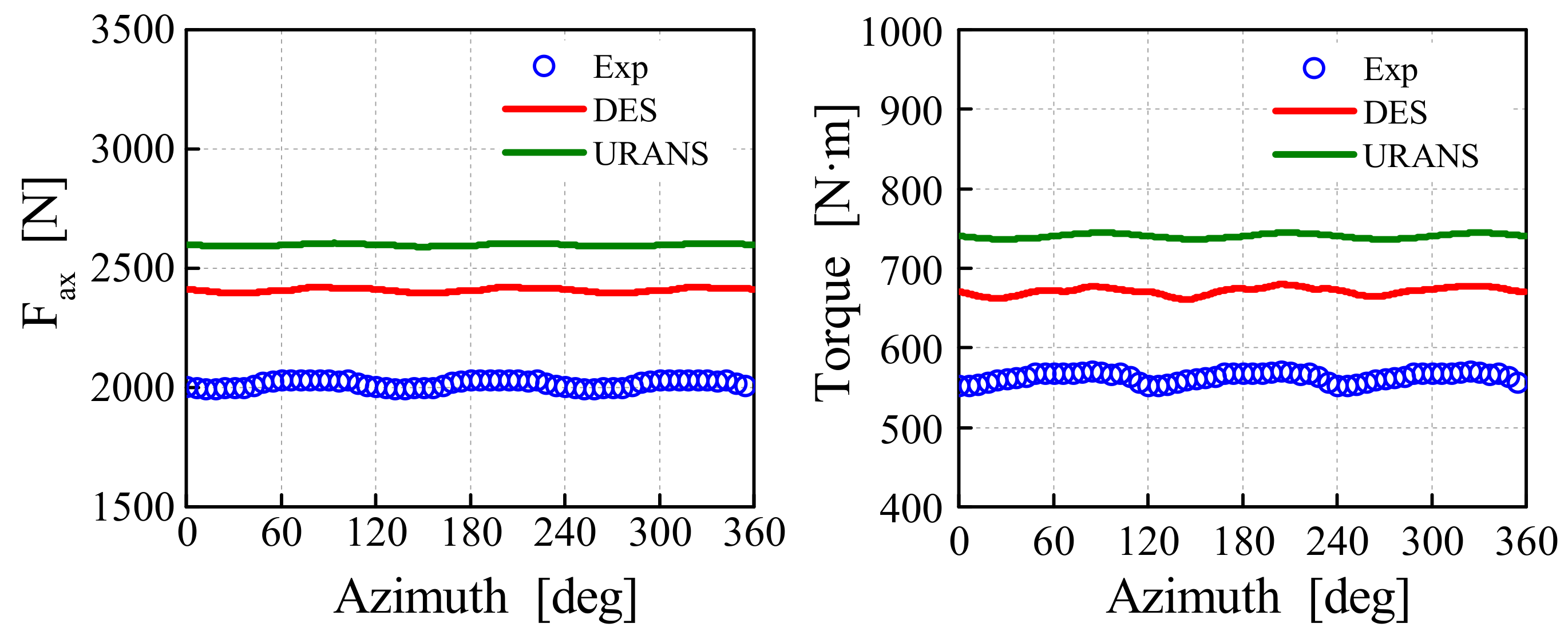
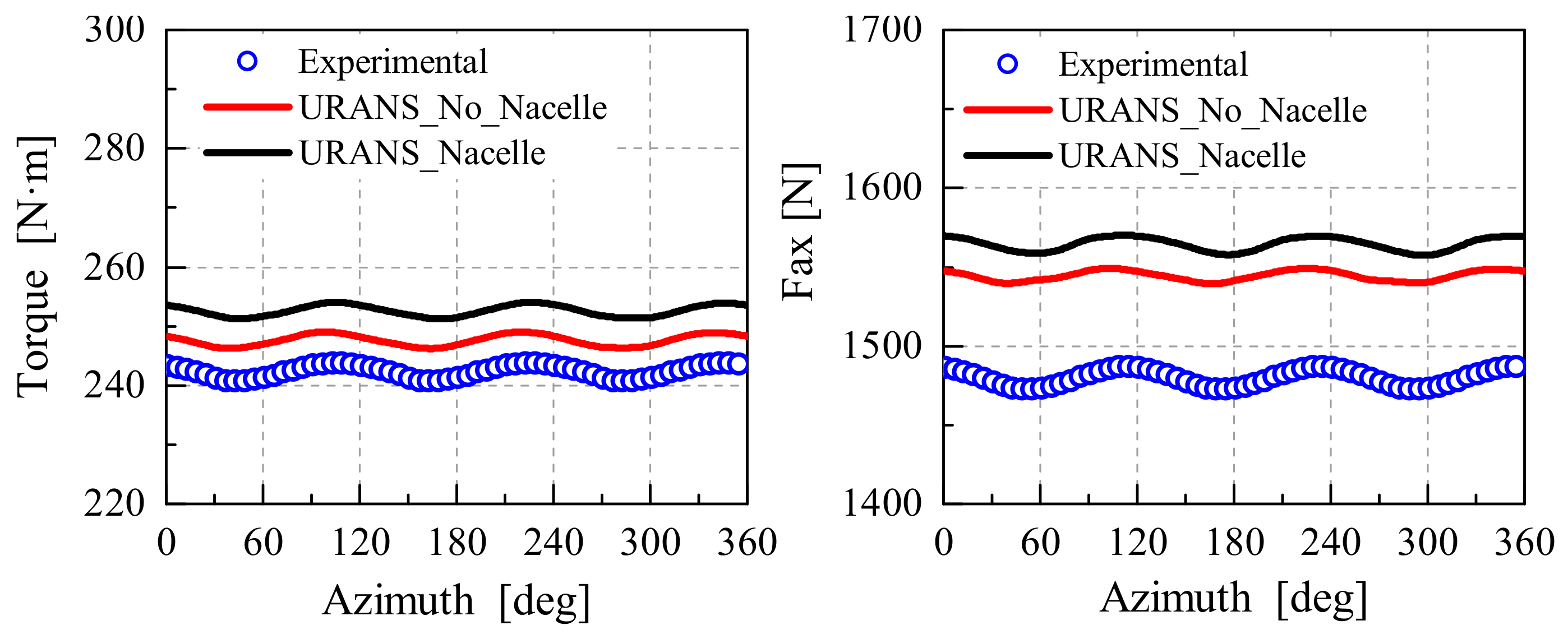

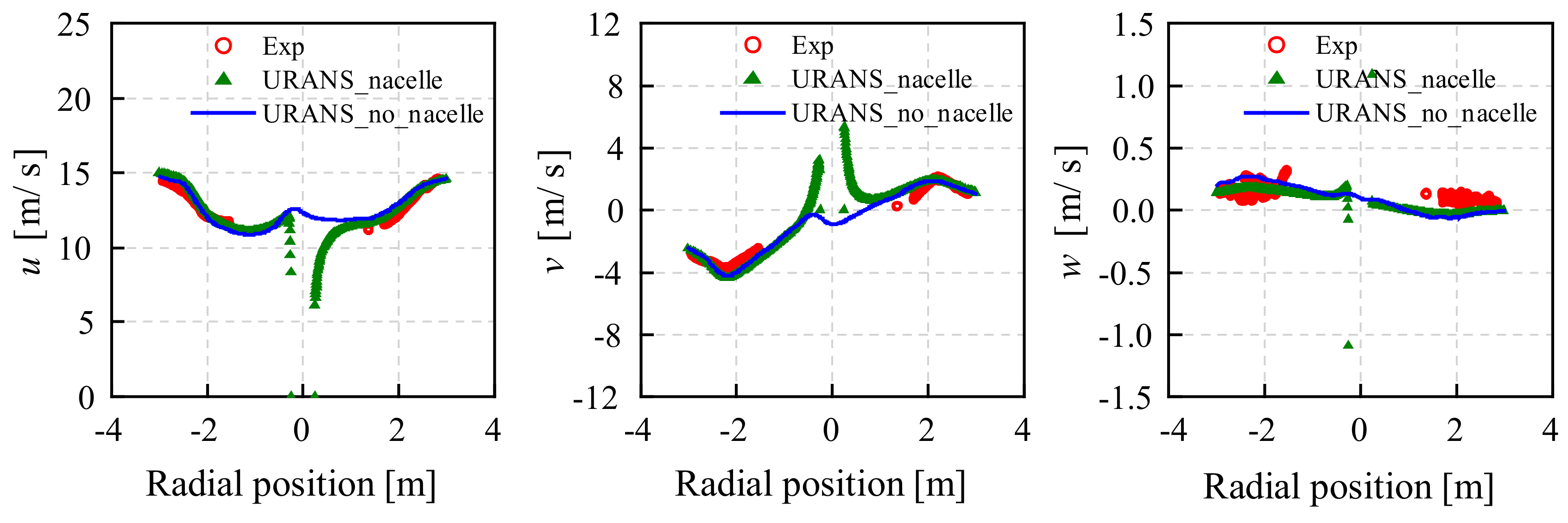






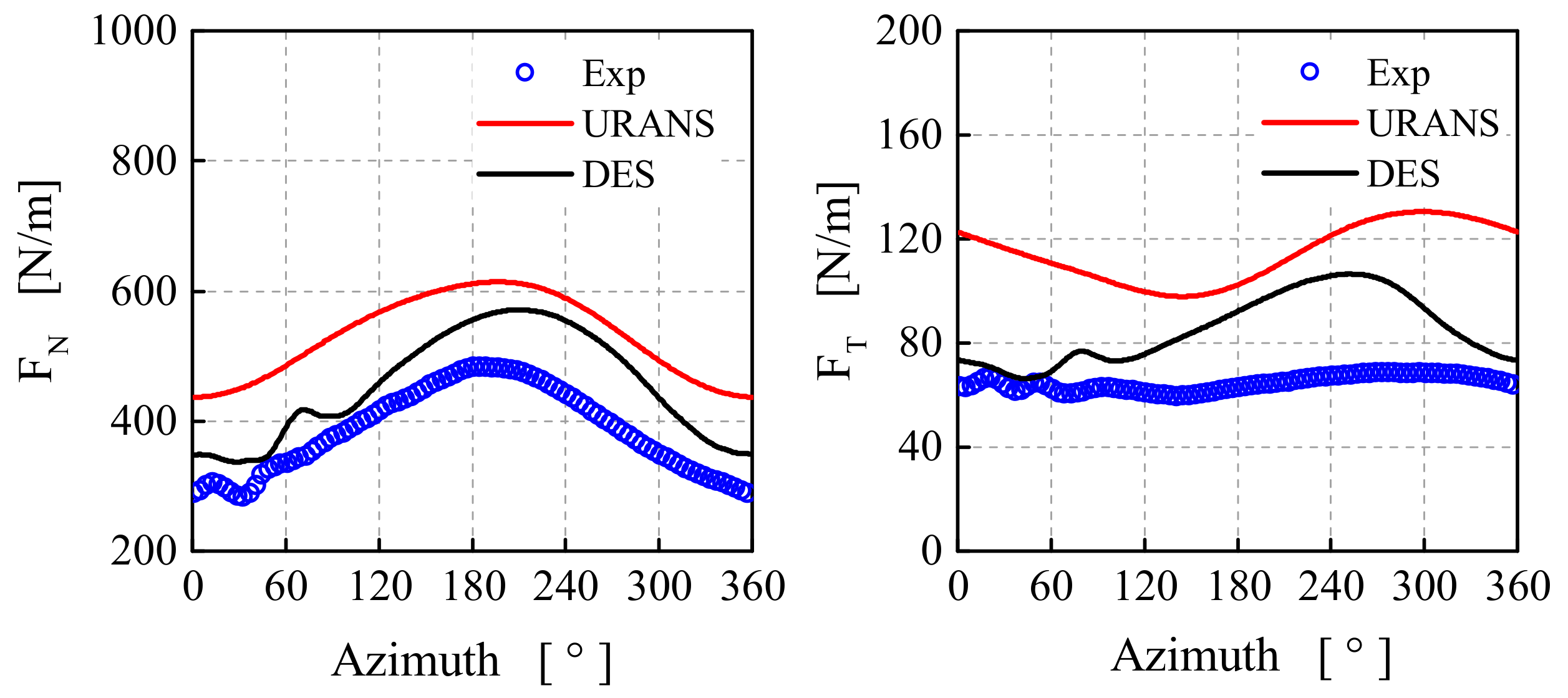
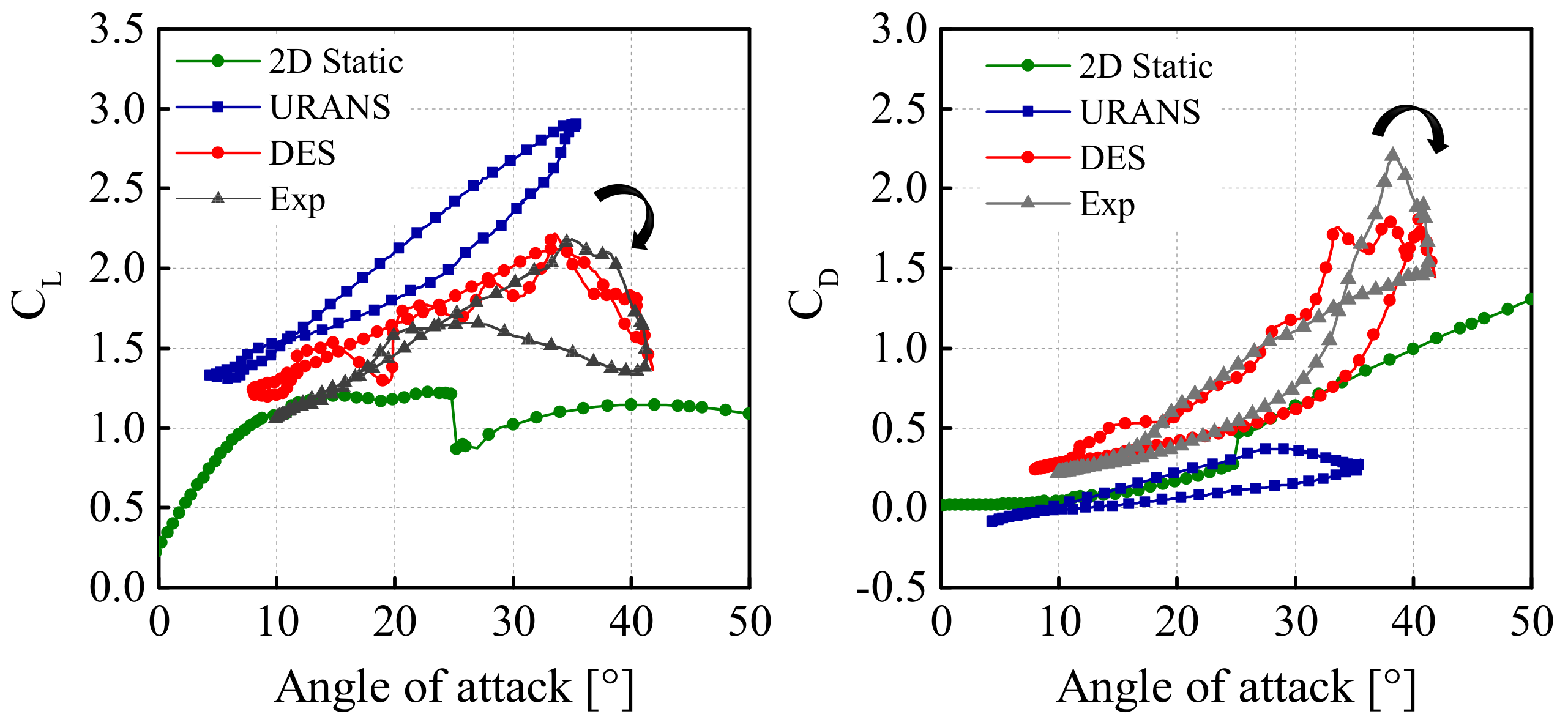
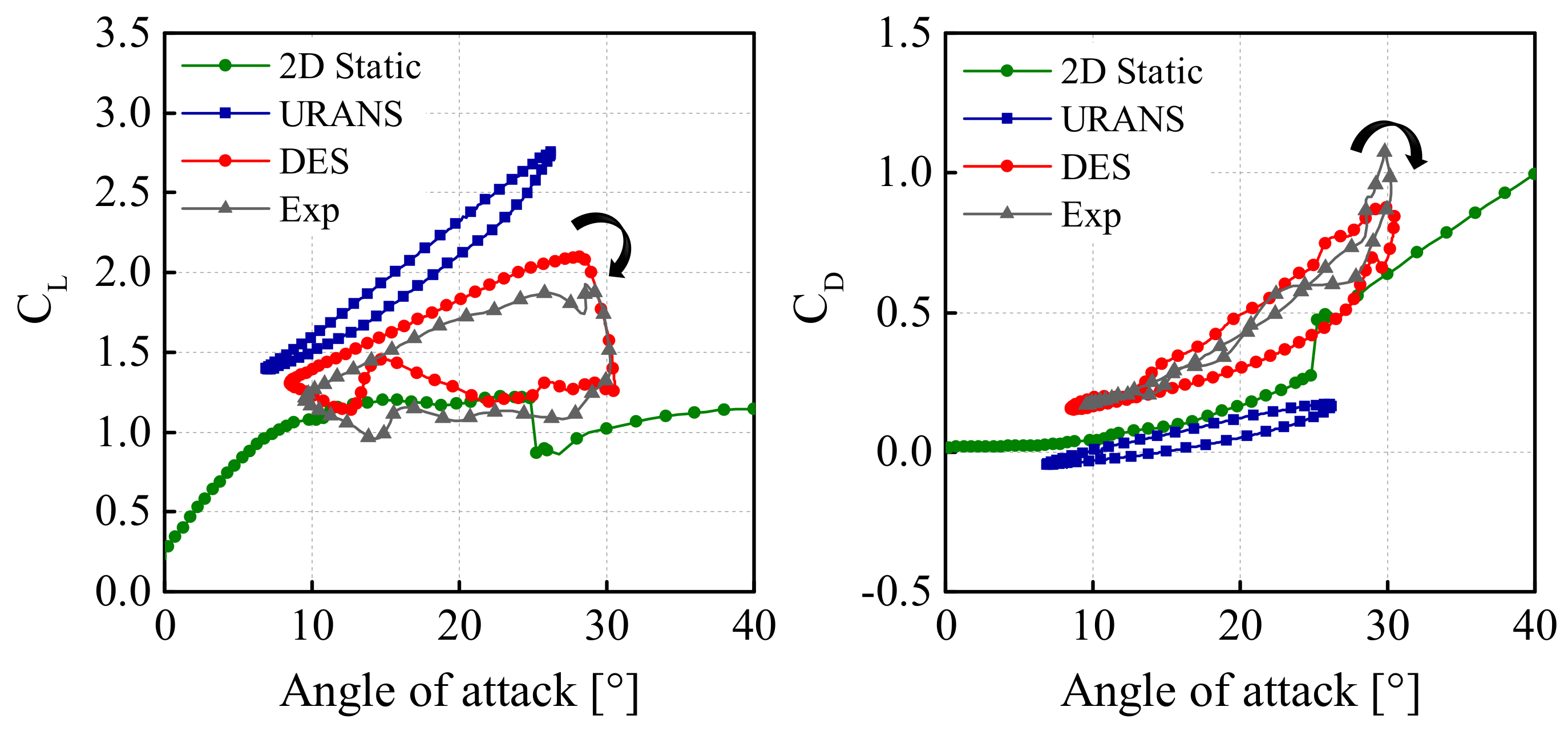
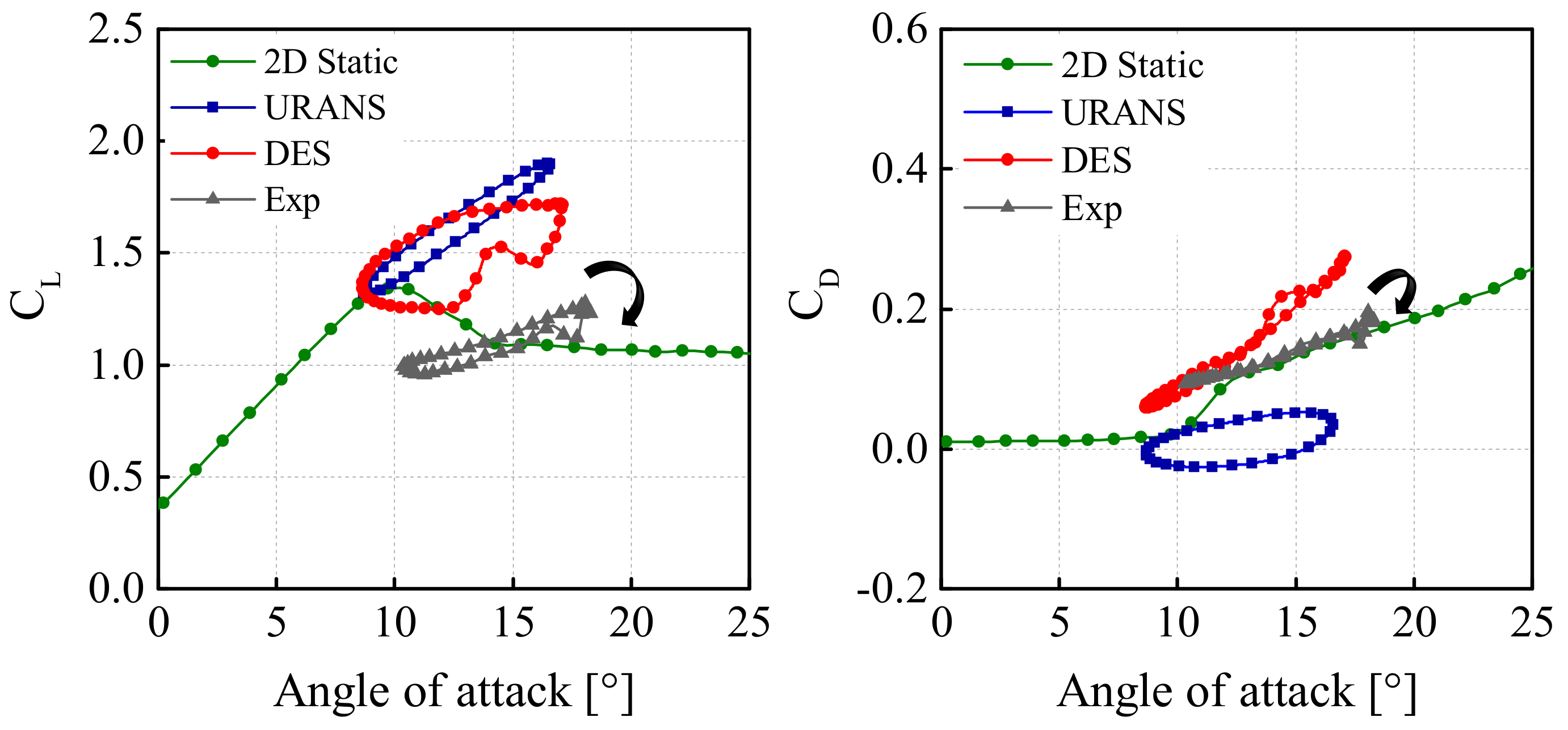






| Radial Position r/R | Airfoil Type |
|---|---|
| 0.0–0.04 | Cylinder |
| 0.04–0.106 | Transition |
| 0.106–0.362 | DU91-W2-250 |
| 0.362–0.451 | Transition |
| 0.451–0.562 | RISØ-A1-21 |
| 0.562–0.651 | Transition |
| 0.651–1.0 | NACA64-418 |
| Coarse | Medium | Fine | Finer | |
|---|---|---|---|---|
| Blade spanwise cell number | 95 | 147 | 211 | 272 |
| Blade chordwise cell number | 198 | 252 | 316 | 368 |
| Rotational cell number (million) | 12.16 | 21.86 | 32.93 | 39.74 |
| Stationary cell number (million) | 4.35 | 7.84 | 12.68 | 16.45 |
© 2018 by the authors. Licensee MDPI, Basel, Switzerland. This article is an open access article distributed under the terms and conditions of the Creative Commons Attribution (CC BY) license (http://creativecommons.org/licenses/by/4.0/).
Share and Cite
Qian, Y.; Zhang, Z.; Wang, T. Comparative Study of the Aerodynamic Performance of the New MEXICO Rotor under Yaw Conditions. Energies 2018, 11, 833. https://doi.org/10.3390/en11040833
Qian Y, Zhang Z, Wang T. Comparative Study of the Aerodynamic Performance of the New MEXICO Rotor under Yaw Conditions. Energies. 2018; 11(4):833. https://doi.org/10.3390/en11040833
Chicago/Turabian StyleQian, Yaoru, Zhenyu Zhang, and Tongguang Wang. 2018. "Comparative Study of the Aerodynamic Performance of the New MEXICO Rotor under Yaw Conditions" Energies 11, no. 4: 833. https://doi.org/10.3390/en11040833




